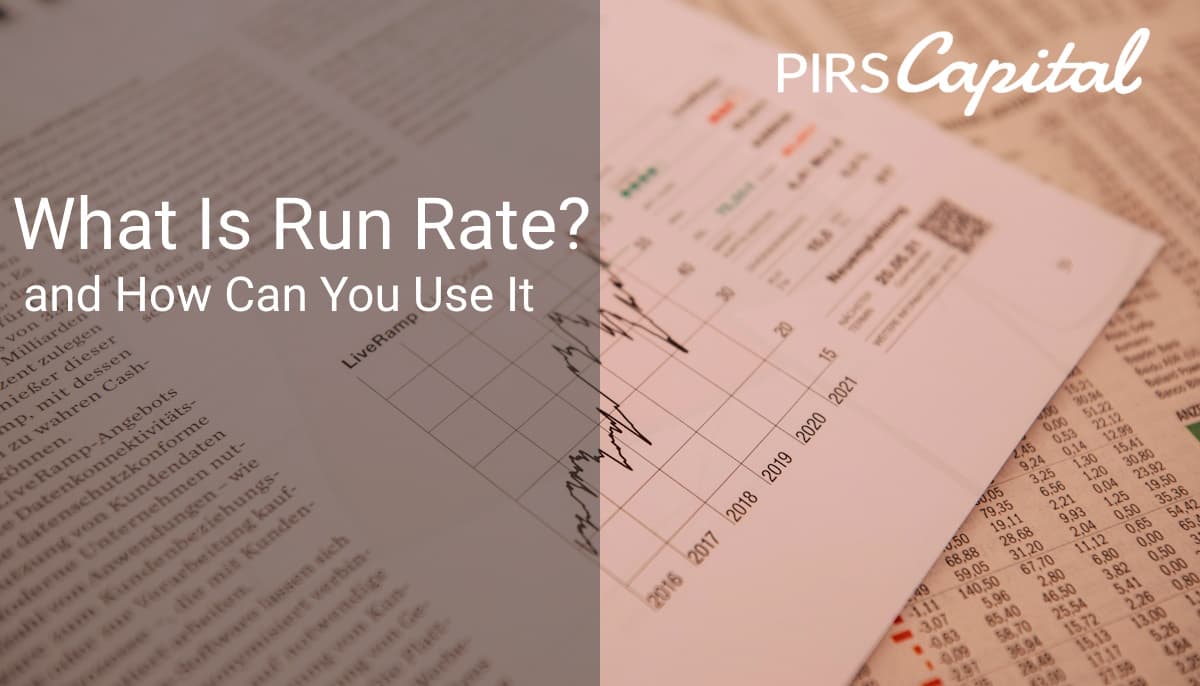An organization’s run rate is a quarterly or monthly measure of its expected annual earnings based on past financial performance.
This metric, which is also referred to as an annual run rate, or ARR, is typically derived by assessing the revenue based on a formula and calculating the sales data to anticipate what the company’s overall profits would be that year. This data could be taken from either a single month or a single quarter.
One can use the data to project future sales for the organization based on the past performance of the business. Consider this data to plot a course for the company’s future expansion.

How to Calculate Run Rate
Your revenue run rate can be computed in a number of different ways, depending on whether or not you need to factor in seasonality or time-based weighting.
Exit Rate Method
1 If your business operates on a monthly subscription basis, the easiest way to calculate your exit rate is to look at your Monthly Recurring Revenue (MRR) from the previous month.
Let’s say in December a company had $1.5M in regular monthly revenue and $1M in one-time sales for a total of $2.5M. Their marketing budget for next year will remain the same, and they have no plans to introduce any new products or run any further promotions.
By extrapolating December’s sales numbers, they can estimate revenue for the coming year.
$12 months x $2.5M = $30M
However, the formula has certain inherent flaws. It does not consider any changes in the number of clients either gained or lost. The accuracy of projections can be improved by beginning with monthly run rate, or Monthly Recurring Revenue.
The Last Quarter Annualized (LQA) Formula
2 Run rate revenue can also be calculated by annualizing the actual revenue from the most recent full quarter. To estimate annual run rate revenue, simply multiply the actual revenue for the previous three months by four. When compared to just multiplying the exit rate from a single month by 12, this method produces a more accurate and reliable short-term estimate.
Rolling Average Formula
3 Revenue run rates, like LQA, can be computed by averaging numbers of months’ worth of data. Six-month (or longer) rolling averages are typically used to make revenue projections. Using this strategy, income projections at a run rate are even more insulated against extreme months.
Pitfalls of Using Run Rate Revenue
Revenue forecasts made on an annual basis ignore seasonality and your company’s rate of growth. Some potential pitfalls of relying on run rate revenue include:
- Investors typically do not consider run rates to be reliable revenue forecasts. Investors could be let down if you got off to a great start but then saw your sales curve flatten or your customer retention rate drop significantly.
- Overspending is possible if run rates are used as a budgeting tool; If the projected run rate is too optimistic, it can lead to issues with money flow.
See Also:
Benefits and Applications of Using Run Rate Revenue
A business’s financial planning, decision-making, and day-to-day operations can all benefit greatly from tracking the run rate in business.
Projection of Funds
By figuring out the run rate, companies can:
- Estimate future revenue and set goals.
- Budget ahead of time.
- Identify trends and expect fluctuations in revenue.
Tracking Money Flow
You may keep tabs on your company’s cash flow with the help of a run rate. Run rate is useful because it forecasts a company’s cash flow by extrapolating its present pace of sales growth into the future.
Decision-Making
Several scenarios illustrate how monitoring run-rate business can help make better choices:
- Resource Allocation.
- Investment Decisions.
- Expenditure Decisions.
- Acquisition Decision.
Optimizing and Comparing Performance
The data can be compared to those of competitors in the same field, revealing areas for development. If a company’s run rate in sales is lower than its rivals, it could mean that it needs to focus on areas like advertising, product development, or streamlining its operations.
The rate of progress can also be monitored to gauge the success of optimization initiatives. The run rate can be used to evaluate the effectiveness of cost-cutting measures, such as a decrease in the marketing budget, on a company’s bottom line.
Final thoughts
The use of run rate in finance is meant to be automatic. It works well when you need answers quickly or when you don’t have a lot of information to work with. However, while talking to investors or writing a press release, you should avoid using basic arithmetic.
You can acquire a more precise amount by just computing the monthly recurring revenue, or you can use a more rigorous statistical model to predict your revenue. But if you’re doing this only for the investors, consider getting small-scale capital assistance from PIRS Capital, where you have the flexibility to pay it back as you gain profits.

I work with companies that sell products on platforms such as Amazon, Shopify, Walmart, Ebay, Etsy, etc. I understand that every business is unique and thats why I form genuine relationships with owners so I can help them reach their goals and find success through our working capital solutions.
